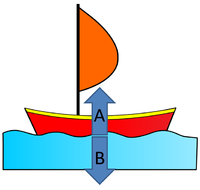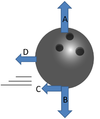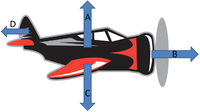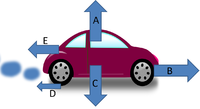Contents
Key Stage 2
Meaning
A force is something which can make an object; speed up, slow down or change shape.
- Noun: Force
About Forces
- A force can make an object speed up. When you let go of a pencil it will fall because a force called weight is making it speed up.
- A force can make an object slow down. When you roll a ball on the carpet it will slow down and stop because a force called friction has slowed it down.
- A force can change the shape of an object. When you tip a spoon of honey the honey will change shape and stretch because a force called weight pulls it into a long shape before dripping.
Key Stage 3
Meaning
A force is an influence that can change the speed, direction or shape of an object.
About Forces
- The scientific units of force is the Newton (N). However, force can also be measured in pounds (lb) and ounces (Oz).
- Forces can be measured using a Newton Meter.
- Forces can be split into two groups, Contact Forces and Non-contact Forces.
| Contact Forces | Non-contact Forces |
- Forces can cause an object to accelerate.
- A pair of opposing forces can twist, stretch or squash an object. This is known as deformation.
Force Arrows
- Forces can be represented in a diagram with arrows that show the magnitude and direction of the force. A bigger arrow means a bigger force.
| A boat that is not moving. | A tennis ball falling. | A bowling ball moving to the right. |
|
| |
| A submarine travelling to the left. | A plane flying to the right. | A car driving to the right. |
|
|
|





